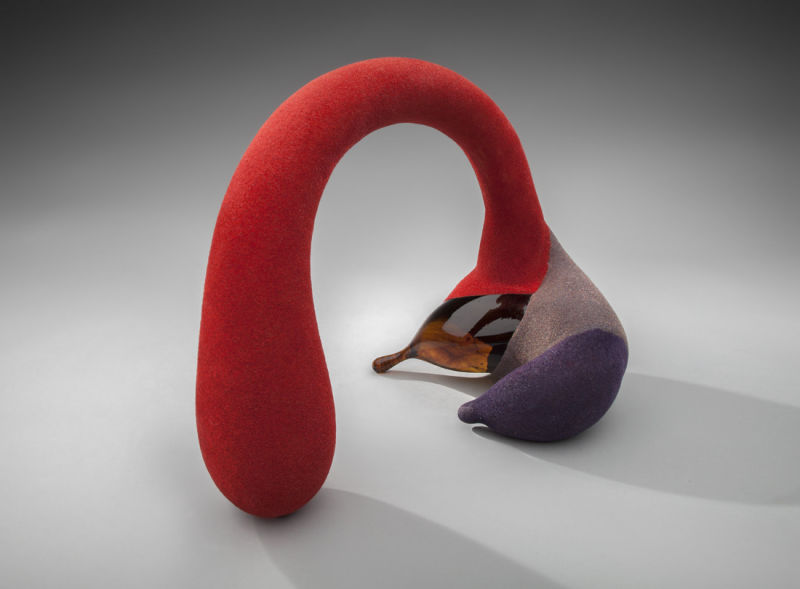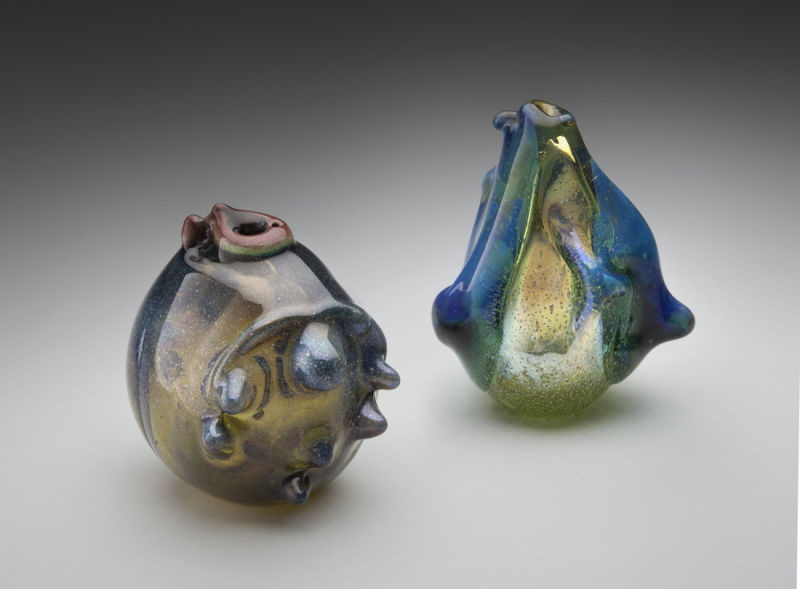“I was told about Marvin before I actually met him,” Fritz Dreisbach, a pioneer of the American studio glass movement, remembers of Marvin Lipofsky, a revered, Bay Area-based glass artist and educator who passed away on Jan. 15 at the age of 77.
Dreisbach heard about Lipofsky from Harvey Littleton, the man who launched the movement at the University of Wisconsin, Madison. There begins a story that shares more than a few similarities with the origin stories of several religions. When people talk about glass art in America, they start to use that kind of language.
A couple weeks after Lipofsky’s passing, the glass art world is still in a state of sorry shock. If Littleton started the movement, Dreisbach says, “Marvin was one of the first disciples, spreading the word about glass.”
Lipofsky did that in two ways: he made glass art, and he taught other people how to do it, from the very beginning. The ink was barely dry on Lipofsky’s diploma when he was hired by UC Berkeley to launch its glass program. That program didn’t last, and Lipofsky went on to launch another program at the California College of Arts and Crafts in Oakland (now the California College of the Arts). In 1968, Lipofsky started the Great California Glass Symposium, and in 1971, he helped found the Glass Art Society, along with other glass artists like Dreisbach.
“He was the kingpin, the guy that I looked up to,” Dreisbach says, adding he and others who taught classes often modeled theirs after Lipofsky. “Most of us went into teaching, so that we could get a lot of people involved. Marvin was the international roving ambassador of glass. He did travel a lot, to conferences and symposiums around the world. He would learn something one place and take it to the next place.”
Lipofsky was fond of organic, biomorphic shapes with textured surfaces. He cut glass, ground it, sandblasted, and acid-washed it. Lipofsky’s California Loop Series, begun in 1967, put the artist on the map.

These bulbous, fanciful, gourd-like shapes could not be confused with domestic craft. “That is sculpture. There is no function,” says Dreisbach. “They were brash. They were exciting. They stretched the imagination of what glass was all about.”
Lipofsky’s methods changed throughout his career, reflecting his global travels and wide-ranging curiosity. The artist developed a habit of incorporating found objects into work he created while on the road.
“Marvin was a total innovator,” says Stephen Powell, a glass artist who invited Lipofsky out to talk to his classes at Centre College in Kentucky. Powell says Lipofsky was, “the best example of an artist finding his own way to work, not being shackled by tradition. Basically, he found a unique way to make glass, without having 40 years of practice in a factory, like they would do in Venice.”
Lipofsky’s work was featured in numerous local exhibitions over the years, including “Studio Glass: 50 Years in California,” at the Oakland Museum of California.
In an interview for the museum, Lipofsky reflects, “When I first started, I tried to deny the beauty of the glass, painting over it and so forth. As I went along, I allowed the beauty of the glass to come through…and tried to capture what glass does as glass.”
The freedom to work with glass in that way, something we take for granted now, was revolutionary at the time. “At the time, it blew people’s minds that you could create what he did with glass,” says Carin Adams, associate curator of art and material culture at the Oakland Museum. “They’re not really vessels. They’re really sculpture.”
Tim O’Brien worked with Lipofsky on Studio Glass, an exhibition at the San Francisco Airport Museum tracing the impact of the California studio glass movement from its origins. “We really wanted a focal point for this survey, and Marvin was certainly a natural focal point as the person who launched this movement out here in Berkeley and Oakland,” O’Brien says.
“He was so influential in helping others understand the potential of glass,” says O’Brien. “He inspired others to follow their ideas. When you see the works, you see these beautiful and sublime forms with wonderful texture and color. You don’t think about the process that it takes.”
No memorial has been planned yet for the artist. But this Facebook page will list details when those become available. There will also likely be additional tributes from his friends at the Glass Art Society and other collectives where Lipofsky made his mark.
